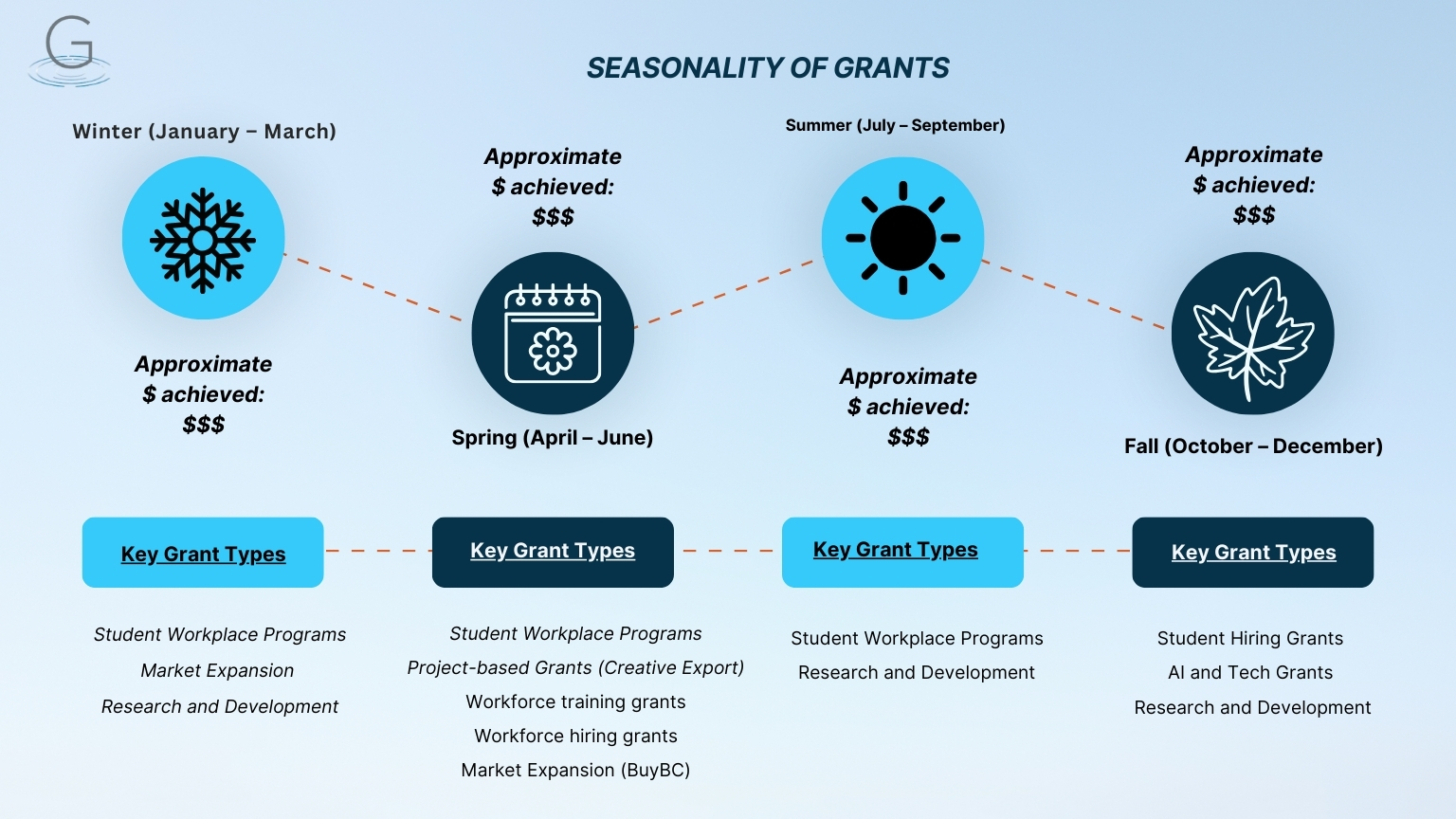Recent trends in hiring grants and how to take advantage of them

Summary
- With low unemployment and high inflation, new hiring grants are likely to be more targeted for the foreseeable future
- New hiring programs tend to prioritize newcomer candidates, so consider adjusting your hiring strategy
- These changing hiring grant trends don’t mean the funding is gone, just that small businesses need to be more strategic with their hiring methods and practices
Struggling to find the right people for your business? You’re not alone: with the unemployment rate holding steady at an all-time low of 4.9%, the labour market is tighter than it’s ever been. We’re keeping a close eye on this trend because it directly impacts the availability of grants for small businesses. Keep on reading to find out how low unemployment could influence your grant strategy.
At the start of the pandemic in April 2020, the unemployment rate in Canada skyrocketed to 13%. COVID-induced lockdowns, layoffs, and work stoppages made it seem as though the economy might completely collapse. The government responded by investing in grant programs to keep people in jobs, but as the situation improved and the unemployment rate dropped, generous hiring subsidies became harder to justify.
Fast-forward to summer 2022, and we have a labour market skewed decidedly in job-seekers’ favour. The government no longer needs to incentivize employers to hire, because employers are hiring as fast as they can, often offering higher salaries, increased flexibility, and other perks to attract top talent. Add high inflation to the mix, and it’s unlikely we’ll see another open season of hiring grants. However, there are still plenty of opportunities to grow your business with grant funding: you just need to identify the points of overlap between your business goals and the government’s funding priorities.
So, what are those funding priorities, and how might they relate to your business? Let’s take immigration as an example. With households shrinking and baby boomers rapidly exiting the workforce, Canada faces a worker shortage unlikely to be remedied without a significant influx of workers from abroad. This explains the ambitious immigration targets set in the 2022-24 Immigration Levels Plan. Canada aims to welcome 430,000+ permanent residents each year in 2022, 2023, and 2024. Meeting these record-breaking targets would alleviate pressure on the labour market, but only if newcomers are successfully integrated into the economy. You can expect the government to make this a priority through 2024. We are already seeing growth in programs designed to help recent immigrants enter the Canadian workforce, and expect this trend to continue for the foreseeable future.
What does this mean for your business? It could mean salary subsidies and other incentives to help you hire recent immigrants with international education and/or work experience. If your hiring strategy already encompasses these individuals, get ready to apply for some grants! And if you’re currently missing out on these candidates, it might be time to reconsider how and who you’re hiring. Newcomers bring a wealth of knowledge, perspective, and ambition to their destination country, and can make valuable contributions to your business. Many business owners find that newcomers bring a fresh perspective to the team. Challenging the status quo can help your business explore things you wouldn’t normally consider.
Not sure where to start? It can be hard to navigate hiring newcomers from generic job boards such as Indeed or LinkedIn. Finding community resources and organizations dedicated to supporting newcomers will help you find the right candidate.
Here are a couple of places you could post your jobs as an employer:
At Granted, we’re always keeping an eye on grant funding trends so we can help small businesses in Canada evolve their grant strategy. To get connected with one of our Grant Angels, fill out our Grant Calculator.




